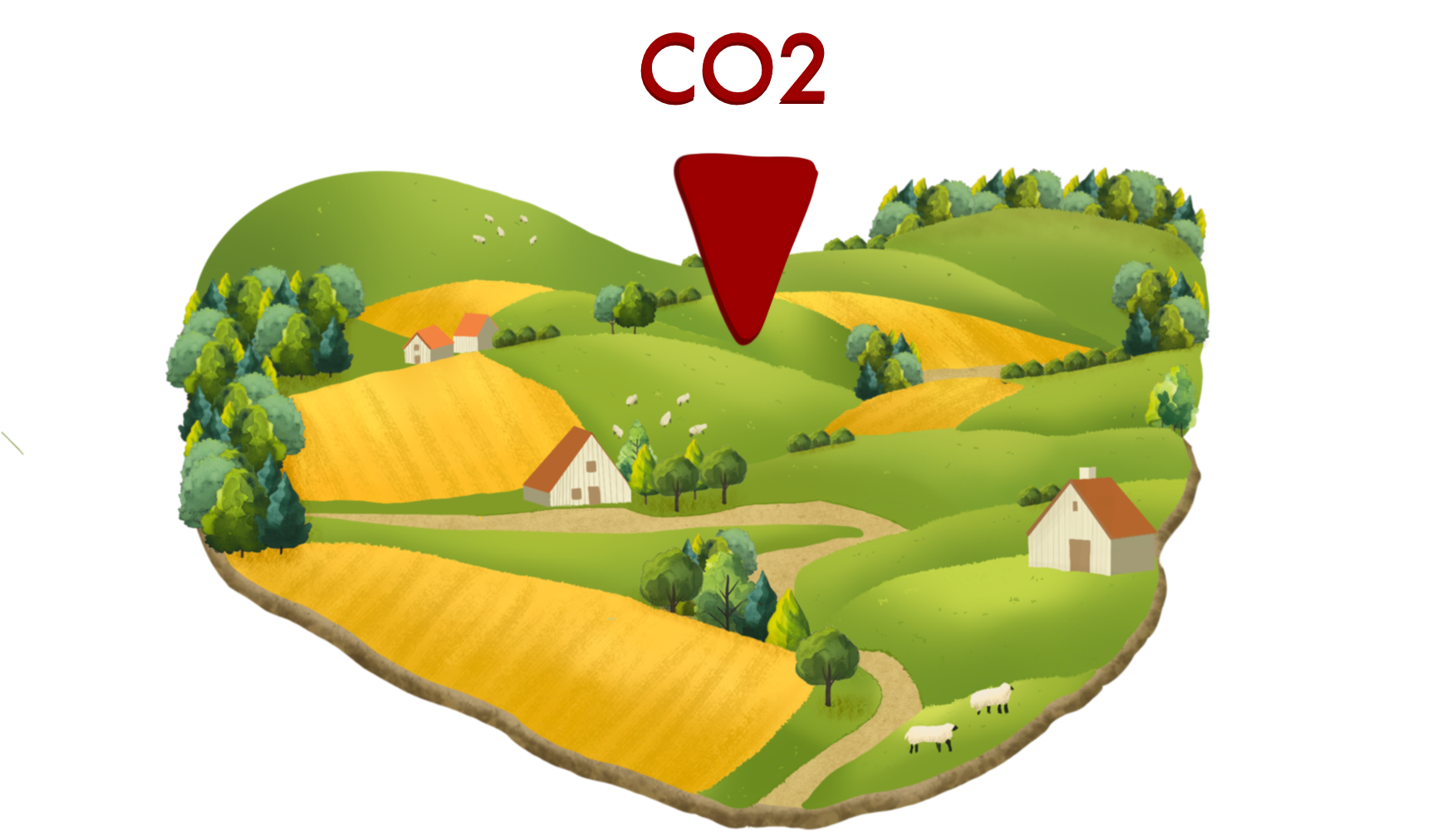Climate Change Mitigation
Soils are the largest terrestrial reservoir of organic carbon, and the balance between soil organic carbon (SOC) formation and loss plays a crucial role in driving carbon-climate feedbacks. Since the dawn of agriculture, agricultural soils have lost substantial amounts of organic carbon, with many areas across Europe still experiencing ongoing losses. To preserve and boost SOC stocks in agricultural soils while effectively reducing emissions of greenhouse gases like N2O and CH4, progress is needed in five key areas:
-
- Gaining a deeper understanding of the processes and factors influencing carbon sequestration and greenhouse gas emissions in agricultural soils.
- Assessing the impact of individual and combined soil management practices on carbon sequestration and emissions, alongside realistic estimations of SOC storage potential across European agricultural soils.
- Exploring and predicting trade-offs between carbon sequestration and greenhouse gas emissions from agricultural soils.
- Developing robust methods for measuring, reporting, and verifying (MRV) SOC stocks and greenhouse gas emissions.
SOC Sequestration Understanding
Key questions in the field include understanding the role of below-ground carbon—such as roots and rhizodeposits—in SOC stocks, as well as how plant cover diversity influences SOC accumulation, stabilization, and carbon-nitrogen dynamics (e.g., Martins et al., 2024). Other areas of focus include microbial carbon use efficiency (e.g., Bolscher et al., 2024), plant-soil interactions in nutrient cycling (e.g., Fontaine et al., 2024), priming effects (e.g., Schiedung et al., 2023), and the saturation point of SOC stocks (e.g., Begill et al., 2023).
Peer reviewed articles
Datasets
Webinars & Educational Materials
SOC Sequestration Potential
Reliable estimates of soil carbon (SOC) sequestration potential are critical for countries to set targets and meet commitments under the Paris Agreement and the EU Climate Law. At the farm level, implementing carbon farming also relies on robust estimations. While some countries have assessed their national SOC sequestration potential in agricultural soils (e.g., Bamière et al., 2023; Budai et al., 2024), these efforts have used diverse methodologies, as highlighted by Rodrigues et al. (2021). A comprehensive assessment for European agricultural soils was therefore lacking.
This gap was addressed by investigating key management practices such as plant cover diversification, application of exogenous organic matter, reduced tillage, conservation agriculture, and organic farming—using long-term experiments (e.g., Fohrafellner et al., 2024). Estimates of SOC stock accumulation were derived for European countries, enabling simulations and predictions of how these practices could influence SOC stocks nationally and across Europe with a Tier 2 approach. Further details can be explored via the EJP SOIL CarboSeq tool
Peer reviewed articles
Deliverables and Reports
Datasets
Blanchy, G. (2022). Export module of the EJP SOIL CarboSeq WP2 database (0.6.5).
Tradeoffs SOC - N - P
Storing additional organic carbon in soils can sometimes lead to trade-offs, such as nitrogen and phosphorus leaching that reduces water quality, or increased emissions of greenhouse gases like N2O and methane. These effects were quantified in organic soils during peatland rewetting (e.g., Koch et al., 2023), and in mineral soils through practices such as conservation agriculture or the application of exogenous organic matter (e.g., Valkama et al., 2024). Tools have been developed to estimate and assess these trade-offs (e.g., Calone et al., 2024).
Peer reviewed articles
Policy Briefs and Notes
Lång, K., van de Craats, D., Honkanen, H., Elsgaard, L., Hessel, R., Kekkonen, H., Larmola, T., Leifeld, J., Lærke, P. E., Rodriguez, A., Saarnio, S., & Zhao, J. 2024. Rewetting of drained peatlands provides permanent and fast GHG mitigation. EJP SOIL policy brief. Zenodo.
Datasets
Lærke, P. E., & Rodriguez, A. (2024). INSURE DK Vejrumbro 2021_22 [Data set]. Zenodo.
Webinars & Educational Materials
MRV Methodology
Low-cost, high-throughput sensing tools, including remote and proximal sensing, are being developed to gather information on soil carbon content. These methods, highlighted in the EU Soil Strategy, are increasingly utilized for measuring, reporting, and verification (MRV) in carbon farming initiatives. However, their limitations and areas of applicability are not yet fully understood (e.g., Knadel et al., 2022). Additionally, modeling the evolution of SOC stocks remains a key component of the MRV process.
Peer reviewed articles
Deliverables and reports

Illustration by Laura Laroche
